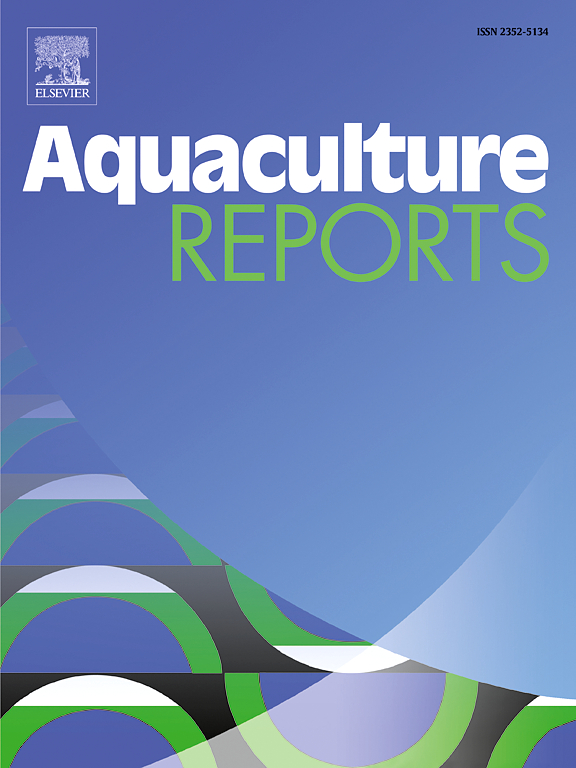甲壳颜色和生长性状在中华环虫中具有相同的主位点
IF 3.7
2区 农林科学
Q1 FISHERIES
引用次数: 0
摘要
蛤(Cyclina Sinensis)是中国重要的海洋经济软体动物。它的外壳通常呈现紫色和白色,消费者表现出对紫色品种的偏好。值得注意的是,紫色贝壳的蛤蜊通常比白色贝壳的蛤蜊大。贝壳颜色是一种质量性状,但未发现明显的显性/隐性关系,这给选择大型纯紫蛤带来了挑战。本研究利用基因分型测序(GBS)方法探索了全基因组遗传标记,并对壳色和生长性状进行了遗传分析。结果表明,各生长性状在遗传和表型上均具有高度相关。鉴定出两个与蛤壳颜色相关的基因座,蚌壳颜色与生长性状显著相关,因为它们具有相同的主位点。这些基因座之间的相互作用为育种实践提供了潜在的效益和利用方法。本文章由计算机程序翻译,如有差异,请以英文原文为准。
Shell color and growth traits share the same major locus in Cyclina sinensis
The clam (Cyclina Sinensis) is an important economic marine mollusk in China. Its shell typically exhibited purple and white colors, with consumers showing a preference for the purple variety. Notably, clams with purple shells are generally larger than those with white shell. Shell color is a qualitative trait, but no evident dominant/recessive relationship has been identified, posing challenges for selecting large, pure purple clams. In this study, we explored genome-wide genetic markers using genotyping by sequencing (GBS) method, and conducted genetic analyses for shell color and growth traits. The results indicated that growth traits were highly correlated both genetically and phenotypically. Two loci associated with clam shell color were identified, and shell color was significantly associated with growth traits, as they share the same major locus. The interactions between these loci suggest potential benefits and utilization methods in breeding practices.
求助全文
通过发布文献求助,成功后即可免费获取论文全文。
去求助
来源期刊

Aquaculture Reports
Agricultural and Biological Sciences-Animal Science and Zoology
CiteScore
5.90
自引率
8.10%
发文量
469
审稿时长
77 days
期刊介绍:
Aquaculture Reports will publish original research papers and reviews documenting outstanding science with a regional context and focus, answering the need for high quality information on novel species, systems and regions in emerging areas of aquaculture research and development, such as integrated multi-trophic aquaculture, urban aquaculture, ornamental, unfed aquaculture, offshore aquaculture and others. Papers having industry research as priority and encompassing product development research or current industry practice are encouraged.
 求助内容:
求助内容: 应助结果提醒方式:
应助结果提醒方式:


